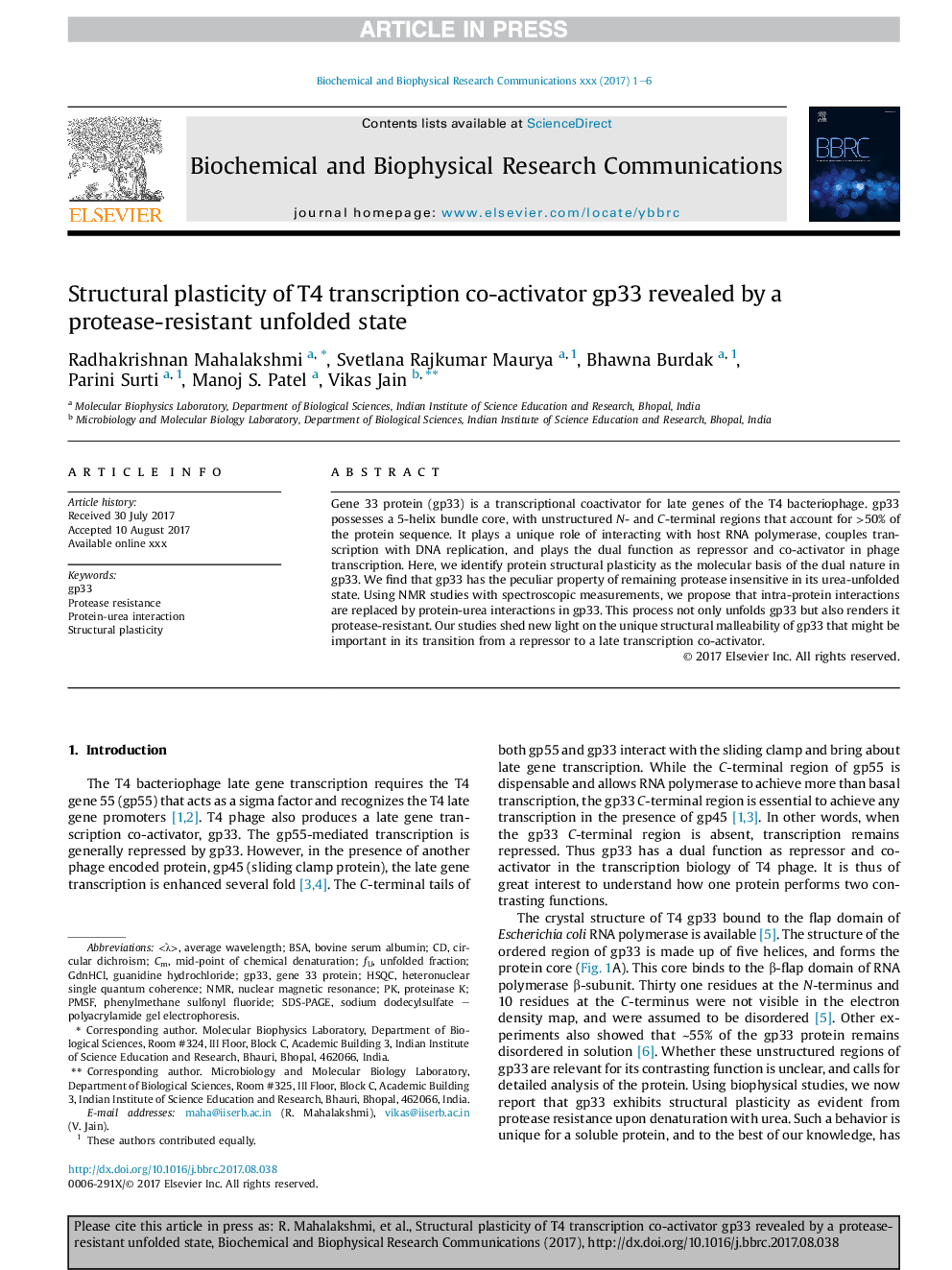| Article ID | Journal | Published Year | Pages | File Type |
|---|---|---|---|---|
| 5504728 | Biochemical and Biophysical Research Communications | 2017 | 6 Pages |
Abstract
Gene 33 protein (gp33) is a transcriptional coactivator for late genes of the T4 bacteriophage. gp33 possesses a 5-helix bundle core, with unstructured N- and C-terminal regions that account for >50% of the protein sequence. It plays a unique role of interacting with host RNA polymerase, couples transcription with DNA replication, and plays the dual function as repressor and co-activator in phage transcription. Here, we identify protein structural plasticity as the molecular basis of the dual nature in gp33. We find that gp33 has the peculiar property of remaining protease insensitive in its urea-unfolded state. Using NMR studies with spectroscopic measurements, we propose that intra-protein interactions are replaced by protein-urea interactions in gp33. This process not only unfolds gp33 but also renders it protease-resistant. Our studies shed new light on the unique structural malleability of gp33 that might be important in its transition from a repressor to a late transcription co-activator.
Keywords
Related Topics
Life Sciences
Biochemistry, Genetics and Molecular Biology
Biochemistry
Authors
Radhakrishnan Mahalakshmi, Svetlana Rajkumar Maurya, Bhawna Burdak, Parini Surti, Manoj S. Patel, Vikas Jain,
